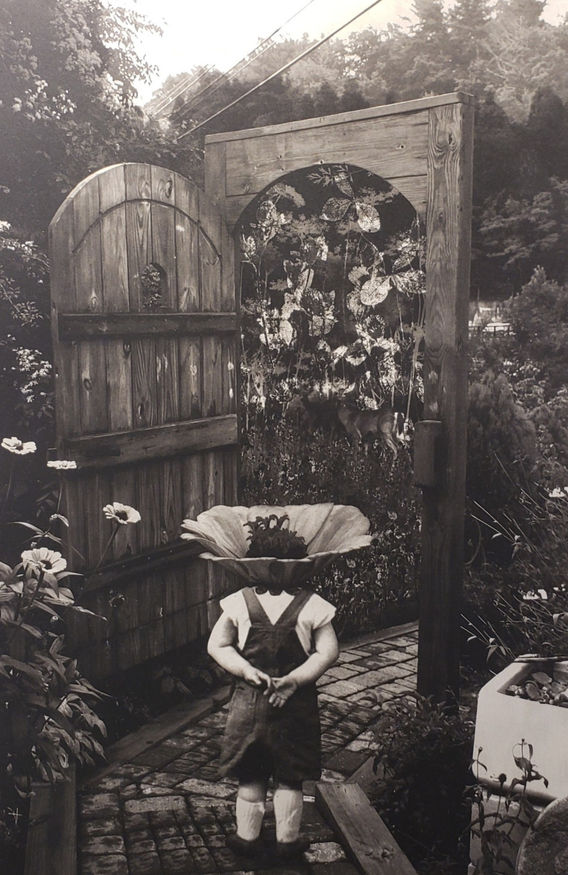Fine Art Portfolio
The Sanctuary - Eliana Kotsias
This body of work illustrates the connections between childhood, imagination, and nature. The natural world always provided a safe haven for me as a child, and I often found great comfort in being surrounded by trees and plants. My wish was to create a whimsical and dreamlike portrayal of growth through youth and its connection to nature and the growth of flora and fauna.
The story dances back and forth between realism and surrealism. Some images show my childhood self as a human and other images display an anthropomorphized creature blending in with their environment. For many of my youngest years - more or less up until the age of 6 or 7 - all of my memories feel blurry and distant. At that age, it was difficult for me to discern between my imagination and reality. I grew up an only child in a rural mountain town. Additionally, I was schooled at home until high school, so my childhood was very lonely in many ways. I believe this was one of the reasons my imagination was so prevalent in my everyday childhood - it filled the emptiness. This body of work is not only a general representation of imagination and childhood but also a gateway into the whimsical way I viewed the world in my younger years.
Throughout history, plants and flowers have been used by artists and writers to tell stories. The metaphysical and medicinal uses of plants have greatly influenced society over the centuries and possess ties to mythology, symbolism, and the history of human survival. During the Victorian era, the practice of sending or giving specific flowers and plants held hidden meanings that people were attempting to convey. Sending groupings of different flowers can also hold various, complex meanings, allowing the sender to communicate with or give warnings to the recipient. As I collected botanicals to etch into these prints, so too these plants gathered old meanings and memories to bring to the world I created.
This body of work was significantly influenced by the Impressionism and Post-Impressionism movements, the Surrealism movement, the Pre-Raphaelites, the painter Ernst Kreidolf, the painter Franz Pocci, and the Illustrator Harry Clarke. The artist Ernst Kreidolf has greatly impacted my work, and his art style and subject matter are what mainly inspired this portfolio. These artists created ethereal landscapes with whimsical characters and each piece has a quality of life-like energy.
I included botanicals in this body of work based on what plants I could get my hands on, but also made sure the ones that I used had symbolism fitting to the work. The flower I utilized most is Queen Anne’s Lace - a symbol of sanctuary. Queen Anne’s Lace is the most prevalent botanical in my work because I wanted to give my characters ethereal sanctuaries to live in. I also used Zinnias in several pieces because my mother and I planted them every Spring in a little home garden we shared. Also, during the Victorian era, Zinnias symbolized everlasting friendship. Through these flowers, I wish to convey the relationship I have now with my inner child - one of friendship and comfort. Chamomile grows throughout my work due to its history of bringing energy through adversity. I used Baby’s Breath similarly to Queen Anne’s Lace, bringing purity and innocence to the pieces. I included this plant, for connections with my mother (as it is one of her favorite flowers) but also to represent childhood innocence and altruistic qualities. This whole body of work encompasses my journey to find safety from childhood trauma and grow through hardship.
Each piece is a digital composite of scanned copper soft ground etchings and cyanotypes, digital photography I have taken over the years, and childhood film photos. I used photoshop to combine all these elements, then etched the imagery into photo-gravure plates. This process allowed for the clarity and delicateness of each composition to be entirely distinguishable.
Because of the high-contrast compositions, the images also have a layer of eeriness to them, which contrasts the cliche nature of florals incorporated into the artwork. This eeriness is also representative of the suffering that seeps into the edges of everyday living. Even when innocently experiencing beauty and happiness, something darker can be lurking. Traumas may attack you as you grow and cloud the picturesque nature of childhood. The darkness within my imagery illustrates the duality of growth and decay, as both make up a meaningful life.









